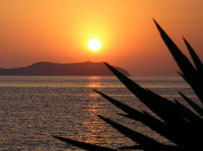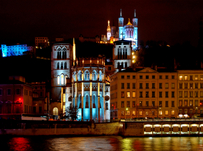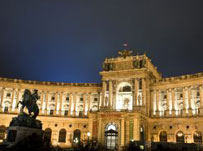10 free things to do in Seville
Seville is a city that entices thousands of Spanish learners each year, and one which rarely disappoints. There is plenty to see and do in the city outside of lessons, and the good news is that much of it is totally free of charge. Here are our top ten recommendations for free things to do during your time in Seville.
1. Explore the Santa Cruz district
With its winding alleys, pretty lime-washed houses and intimate squares this formerly Jewish district is undoubtedly one of the loveliest in Seville. Wandering through the tiny streets will give you a real sense of the Seville of times gone by, and some much-needed shelter from the searing sun if you visit in summer!
Much of the legend of Don Juan, plays out in the Santa Cruz Quarter, and you can visit the Plaza de los Venerables, where Don Juan Tenorio is supposed to have been born, and the Plaza de Doña Elvira, where Doña Ines, the object of Don Juan’s desire, is supposed to have been born.
2. Visit the Real Fabrica de Tabacos
The Real Fabrica de Tabacos is now the main building for the University of Seville. Built in the 18th century, the building was initially constructed for the production of tobacco products from the New World, and was made famous by the Bizet’s opera Carmen. At one time this was the largest industrial building in all of Europe, complete with moats, fountains, a chapel and even a prison.
3. Go up the Giralda
The Giralda in Seville is one of the only three remaining Almohad minarets in the world (the others are both in Morocco). The beautiful structure became the bell tower of Seville Cathedral after the Reconquista and still dominates the city’s skyline. The Giralda was the minaret of the mosque that was replaced by Seville Cathedral. 
Entrance to the tower is from inside the cathedral, and entry to both is free every Sunday.
4. Enjoy a fantastic view of Seville from the ‘mushroom’
Ok, first we need to admit that this isn’t entirely free…but it’s only a Euro or two and the view that you get from this new structure is well worth it. It might look like a mushroom, and is referred to as that by locals, but its proper name is the Espacio Metropol Parasol, and it was specifically designed as a viewing tower.
5. Take a stroll through the Triana district
The Triana district of Seville was traditionally known as the ‘gypsy’ quarter, famous for its bull fighters and flamenco. Its paved streets and ceramic shops give you a taste of authentic Seville, and one that may not be experienced by most tourists. Visitors to Triana can buy traditional ceramics, walk through the town during the day and enjoy the vibrant atmosphere of the bars and in the evening.
6. Visit the Parque de María Luisa and Plaza de España 
Built in 1929 for the Ibero-American fair, this beautiful garden and lovely plaza sit next to each other to the south-east of Seville. You can explore the botanical trail and exhibition buildings in the park, and take in the Art Deco and Mudejar architecture of the plaza. Visiting the plaza during the evening is especially nice as the fountain and building are illuminated.
7. Spend an afternnon in the in the Archive de Indias
Included on USESCO’s World Heritage List, the Archive de Indias was commissioned by Phillip II and built during the 16th Century. It contains a library of historical documentation of Spain’s American empire, including Christopher Colombus’ journal. Entrance is free on Sunday afternoons.
8. Visit the Reial Alcázar 
The Reial Alcázar (Royal Palace) was originally a Moorish fortress but was later re-developed by King Pedro of Castille in the 14th century as a palace. Although the King used Moorish workers specifically to continue its Islamic features, subsequent rulers made additions in a variety of other styles. It’s a fantastically well-preserved building with courtyards, patios and chapels, all of which are beautifully decorated. Entrance is free for anyone living in Seville (and able to show proof), and also for disabled people and under 16s. Pensioners pay just 2 Euro, as do students between 17-25. Find out more.
9. Walk down the Calle Parras
This street is probably the best place to see the Macarena procession in Semana Santa, but no matter what time of year you visit you’ll be left with little doubt as to the devotion to this procession and to the church. Nearly all of the houses on the street have tile paintings related to the Virgin or the Señor.
10. See the Torre del Oro
One of Seville’s most iconic landmarks, the Torre del Oro was built by Moors in the 13th century as a watchtower to help safeguard the city from Christian invaders. It was built with stone and decorated with golden tiles, which explains its name, and now represents a lasting reminder of the Moorish walls which once enclosed the city. Inside you can visit a maritime museum which documents the history of the navy and the ships that docked at this old port. It is free to visit on Tuesdays.
Cactus offers a range of Spanish courses in Seville at a variety of levels. For full listings and to book please visit the Cactus Language website.




